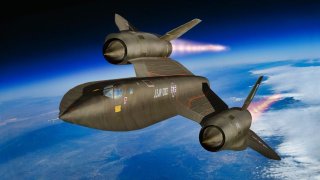B-71: How the SR-71 Blackbird Could Have Become a Bomber
The idea of converting the SR-71 Blackbird into a bomber, known as the B-71, was initially considered but ultimately abandoned. The SR-71's primary mission was strategic reconnaissance, excelling in speed and altitude while avoiding around 4,000 surface-to-air missiles during its service.
Summary and Key Points: The idea of converting the SR-71 Blackbird into a bomber, known as the B-71, was initially considered but ultimately abandoned.
-The SR-71's primary mission was strategic reconnaissance, excelling in speed and altitude while avoiding around 4,000 surface-to-air missiles during its service.
-However, converting it into a bomber presented numerous challenges. Carrying bombs would have reduced fuel capacity, requiring more in-air refueling and adding to operational costs.
-Additionally, the lack of space for internal ordnance and the potential impact on speed and altitude made the concept impractical.
-Precision-guided munitions were not available during the SR-71's early operational years, making bomb accuracy an issue.
The B-71 Plan: Why the SR-71 Wasn't Converted into a Bomber
The B-71 Plan Failed: The SR-71 Blackbird was never hit or damaged by enemy fire. It eluded an estimated 4,000 surface-to-air missiles during its service life.
With this track record, why didn’t the Americans have it drop a bomb or two when blasting across the sky? This conversion would have been expensive, difficult, and maybe not even aerodynamically possible. But let’s dig deeper into why the SR-71 Blackbird never became a bomber.
B-71: Initial Plans for an SR-71 Bomber?
At first, it appeared that the SR-71 program would add a bomber to the fleet. The project was initially called the B-71 to denote it as a fighter/bomber/reconnaissance airplane based on the Lockheed A-12 Oxcart. According to the National Museum of the Air Force, “the fighter version became the YF-12A, but the bomber version never materialized.”
High-Flying SR-71 Meant High Prices
The “SR” stands for Strategic Reconnaissance and that was the main mission. It was a record-setter in speed - flying MACH 3.2, and in altitude - hitting a ceiling of 85,000 feet. But it was expensive to fly – at an estimated $200,000 per hour. In 1989, Air Force Chief of Staff Gen. Larry D. Welch told Congress that the “Secretary of the Air Force estimated that the money used to operate the SR-71 fleet could operate and maintain two tactical fighter wings.”
SR-71: Fuel Was the Issue
Some of this cost was because of the high amount of fuel and the need for in-air refueling for any given mission. Carrying bombs would have meant the Blackbird could carry less fuel and this would likely necessitate another aerial re-fueling - adding to the cost of operation.
Could It Carry Bombs in Numbers?
Where or how would the bombs be carried? Private and commercial pilot Joe Shelton looked at this question closely on a post he wrote for Quora.

“The SR-71’s fuselage had very little room for internal ordnance. Almost all of it was used for fuel. If it were attached under the wings then our MACH 3 aircraft would probably be a MACH 2 aircraft or less. Maybe much less, depending, and that means a much lower cruise altitude. Of course, it would have given up some fuel capacity for ordnance. Lower and slower would have robbed the aircraft of its famed invulnerability intercepting aircraft or anti-aircraft missiles,” Shelton wrote.
Dumb Bombs Would Have Been Inaccurate
How accurate would a bomb dropped by an SR-71 be? It would not have been a precision-guided munition in the early days of the Blackbird’s life. A “dumb” bomb dropped from that high of an altitude would have likely missed its target.
Internal Storage of Ordnance
The SR-71 would have had to carry numerous bombs to try and hit targets and the airplane did not lend itself to carrying a heavy load of ordnance. The bombs would also have to be carried inside the airplane as Shelton explained.
“Since in order to maintain the supersonic cruise speed the ordnance would have to be carried internally, there is some question regarding deploying the ordnance without slowing the aircraft first to open the bomb bay doors or effect a safe ordnance release,” Shelton wrote.
Sorry, No SR-71 Bomber
Making the SR-71 into a bomber was thus a bridge too far. The bomber would have been more expensive to maintain. It would have needed to have been re-fueled more. The bombs would not have been accurate until precision-guided munitions were developed. And the ordnance would have needed to be carried internally to maintain the high speed and altitude. So, no bombs for the SR-71.
About the Author: Dr. Brent M. Eastwood
Brent M. Eastwood, Ph.D., is the author of Humans, Machines, and Data: Future Trends in Warfare. He is an Emerging Threats expert and former U.S. Army Infantry officer. You can follow him on Twitter @BMEastwood.
All images are Creative Commons.


